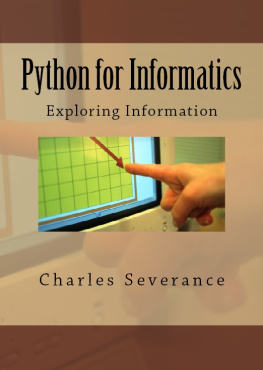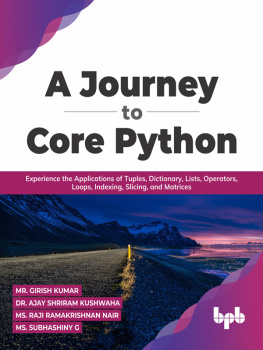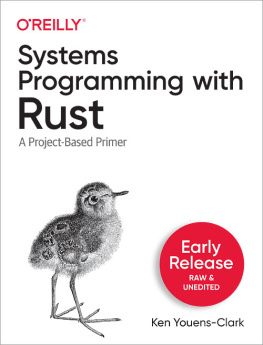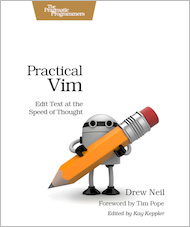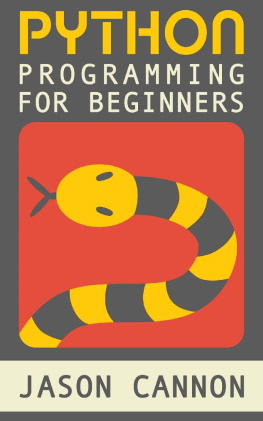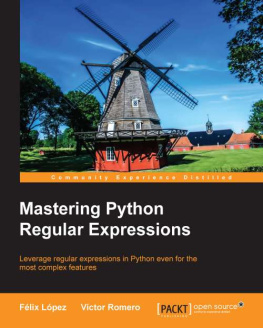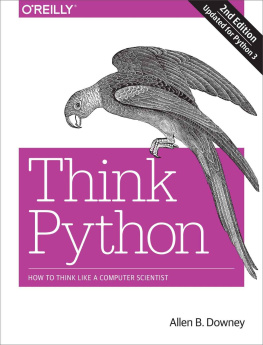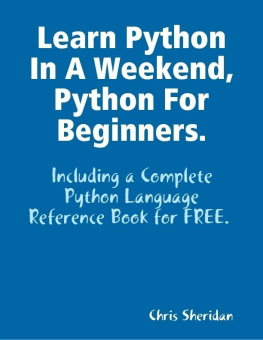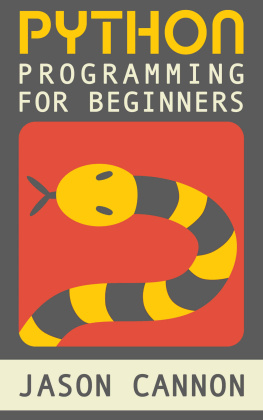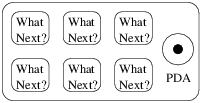Chapter 0 Preface
Python for Informatics: Remixing an Open Book
It is quite natural for academics who are continuously told to publish or perish to want to always create something from scratch that is their own fresh creation. This book is an experiment in not starting from scratch, but instead remixing the book titled Think Python: How to Think Like a Computer Scientist written by Allen B. Downey, Jeff Elkner, and others.
In December of 2009, I was preparing to teach SI502 - Networked Programming at the University of Michigan for the fifth semester in a row and decided it was time to write a Python textbook that focused on exploring data instead of understanding algorithms and abstractions. My goal in SI502 is to teach people lifelong data handling skills using Python. Few of my students were planning to be professional computer programmers. Instead, they planned to be librarians, managers, lawyers, biologists, economists, etc., who happened to want to skillfully use technology in their chosen field.
I never seemed to find the perfect data-oriented Python book for my course, so I set out to write just such a book. Luckily at a faculty meeting three weeks before I was about to start my new book from scratch over the holiday break, Dr. Atul Prakash showed me the Think Python book which he had used to teach his Python course that semester. It is a well-written Computer Science text with a focus on short, direct explanations and ease of learning.
The overall book structure has been changed to get to doing data analysis problems as quickly as possible and have a series of running examples and exercises about data analysis from the very beginning.
Chapters 210 are similar to the Think Python book, but there have been major changes. Number-oriented examples and exercises have been replaced with data-oriented exercises. Topics are presented in the order needed to build increasingly sophisticated data analysis solutions. Some topics like try and except are pulled forward and presented as part of the chapter on conditionals. Functions are given very light treatment until they are needed to handle program complexity rather than introduced as an early lesson in abstraction. Nearly all user-defined functions have been removed from the example code and exercises outside of Chapter 4. The word recursion does not appear in the book at all.
In chapters 1 and 1116, all of the material is brand new, focusing on real-world uses and simple examples of Python for data analysis including regular expressions for searching and parsing, automating tasks on your computer, retrieving data across the network, scraping web pages for data, using web services, parsing XML and JSON data, and creating and using databases using Structured Query Language.
The ultimate goal of all of these changes is a shift from a Computer Science to an Informatics focus is to only include topics into a first technology class that can be useful even if one chooses not to become a professional programmer.
Students who find this book interesting and want to further explore should look at Allen B. Downeys Think Python book. Because there is a lot of overlap between the two books, students will quickly pick up skills in the additional areas of technical programming and algorithmic thinking that are covered in Think Python. And given that the books have a similar writing style, they should be able to move quickly through Think Python with a minimum of effort.
As the copyright holder of Think Python, Allen has given me permission to change the books license on the material from his book that remains in this book from the GNU Free Documentation License to the more recent Creative Commons Attribution Share Alike license. This follows a general shift in open documentation licenses moving from the GFDL to the CC-BY-SA (e.g., Wikipedia). Using the CC-BY-SA license maintains the books strong copyleft tradition while making it even more straightforward for new authors to reuse this material as they see fit.
I feel that this book serves an example of why open materials are so important to the future of education, and want to thank Allen B. Downey and Cambridge University Press for their forward-looking decision to make the book available under an open copyright. I hope they are pleased with the results of my efforts and I hope that you the reader are pleased with our collective efforts.
I would like to thank Allen B. Downey and Lauren Cowles for their help, patience, and guidance in dealing with and resolving the copyright issues around this book.
Charles Severance
www.dr-chuck.com
Ann Arbor, MI, USA
September 9, 2013
Charles Severance is a Clinical Associate Professor at the University of Michigan School of Information.
Except, of course, for this line.
Chapter 1 Why should you learn to write programs?
Writing programs (or programming) is a very creative and rewarding activity. You can write programs for many reasons, ranging from making your living to solving a difficult data analysis problem to having fun to helping someone else solve a problem. This book assumes that everyone needs to know how to program, and that once you know how to program you will figure out what you want to do with your newfound skills.
We are surrounded in our daily lives with computers ranging from laptops to cell phones. We can think of these computers as our personal assistants who can take care of many things on our behalf. The hardware in our current-day computers is essentially built to continuously ask us the question, What would you like me to do next?
Programmers add an operating system and a set of applications to the hardware and we end up with a Personal Digital Assistant that is quite helpful and capable of helping us do many different things.
Our computers are fast and have vast amounts of memory and could be very helpful to us if we only knew the language to speak to explain to the computer what we would like it to do next. If we knew this language, we could tell the computer to do tasks on our behalf that were repetitive. Interestingly, the kinds of things computers can do best are often the kinds of things that we humans find boring and mind-numbing.
For example, look at the first three paragraphs of this chapter and tell me the most commonly used word and how many times the word is used. While you were able to read and understand the words in a few seconds, counting them is almost painful because it is not the kind of problem that human minds are designed to solve. For a computer the opposite is true, reading and understanding text from a piece of paper is hard for a computer to do but counting the words and telling you how many times the most used word was used is very easy for the computer:
python words.pyEnter file:words.txtto 16
Our personal information analysis assistant quickly told us that the word to was used sixteen times in the first three paragraphs of this chapter.
This very fact that computers are good at things that humans are not is why you need to become skilled at talking computer language. Once you learn this new language, you can delegate mundane tasks to your partner (the computer), leaving more time for you to do the things that you are uniquely suited for. You bring creativity, intuition, and inventiveness to this partnership.
1.1 Creativity and motivation
While this book is not intended for professional programmers, professional programming can be a very rewarding job both financially and personally. Building useful, elegant, and clever programs for others to use is a very creative activity. Your computer or Personal Digital Assistant (PDA) usually contains many different programs from many different groups of programmers, each competing for your attention and interest. They try their best to meet your needs and give you a great user experience in the process. In some situations, when you choose a piece of software, the programmers are directly compensated because of your choice.
Next page
